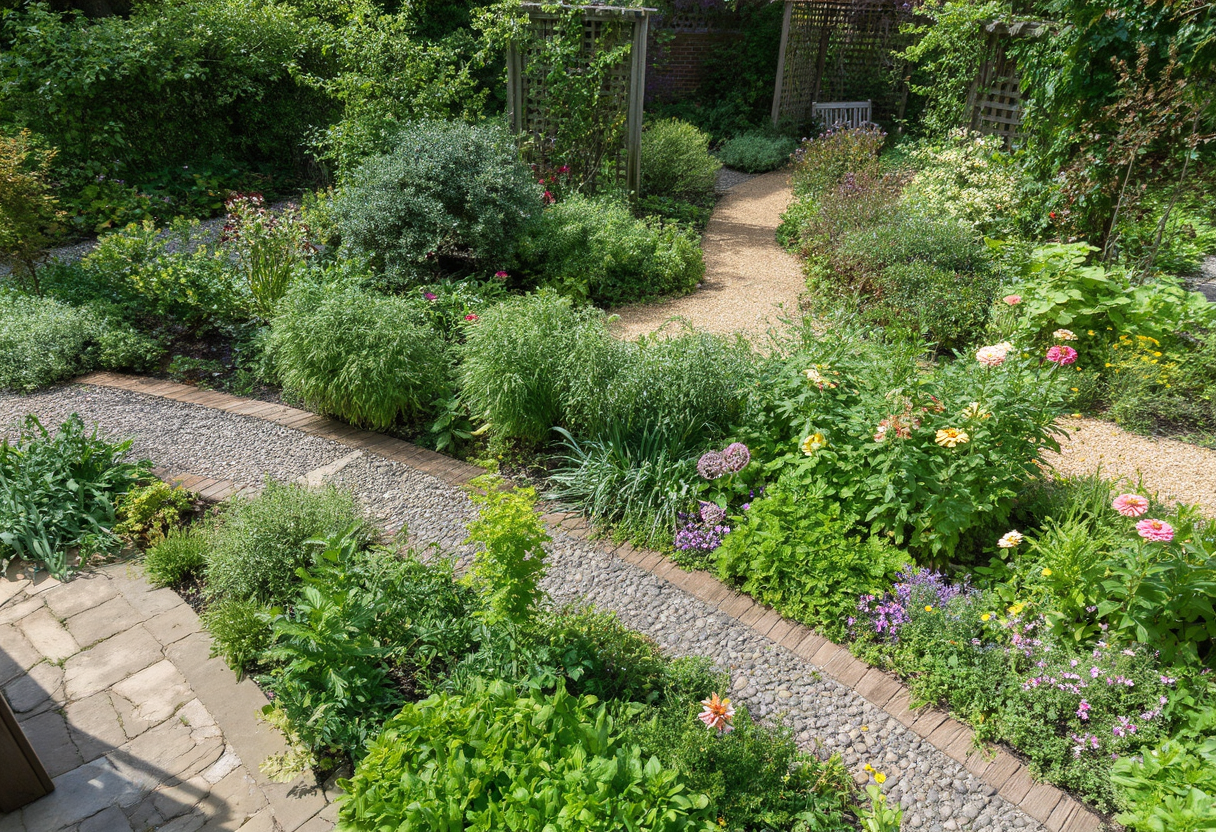Exploring the Aesthetic and Functional Benefits of Garden Pathways
Garden pathways serve as both artistic expressions and practical routes through nature. By incorporating various materials and designs, these pathways transform gardens into accessible sanctuaries. Beyond their aesthetic charm, garden pathways also enhance movement and offer a structured layout, guiding visitors through the unique flora while supporting garden maintenance. This exploration delves into the creative and functional aspects of garden pathways, providing insights for enthusiasts looking to improve their outdoor spaces.
Aesthetic Appeal of Garden Pathways
Garden pathways are pivotal in enhancing the visual splendor of outdoor spaces. These pathways not only function as routes but also serve as canvases for showcasing creative landscaping designs. By integrating diverse materials such as stones, bricks, and gravel, garden pathways can harmonize with the surrounding flora, creating a seamless blend with nature. Choosing the right design enhances not just aesthetics but also invites exploration. For instance, a winding garden pathway can create a sense of mystery, prompting visitors to discover hidden nooks of the garden. This aesthetic dimension of garden pathways encourages deeper engagement with the outdoor environment, making them essential for any garden layout. Moreover, the use of vibrant colors and textures in garden pathways complements blooming flora, further accentuating the beauty of outdoor spaces.
Functional Advantages of Garden Pathways
Beyond their artistic value, garden pathways provide significant functional benefits. They create clear navigational routes that prevent soil compaction around plants, promoting healthy growth. This functionality is particularly important in larger gardens where visitors may otherwise wander through flower beds. Additionally, well-designed garden pathways can lead visitors to specific areas, such as seating corners or water features, enhancing the overall experience. Effective pathways allow for maintenance activities without damaging plants, making access easier for gardening tasks. It's worth noting that garden pathways can significantly reduce the risk of accidents by providing stable footing, particularly in wet conditions. The practical role of garden pathways showcases their importance in landscape design, balancing beauty with utility.
Materials Used in Garden Pathway Construction
Choosing the right materials for garden pathways is crucial for achieving both longevity and aesthetic appeal. Common materials include flagstone, interlocking pavers, and decomposed granite, each offering unique characteristics. For example, flagstone provides a rustic look, while interlocking pavers deliver a modern touch. The choice of material directly influences the pathway's maintenance needs and durability. Moreover, integrating eco-friendly options, like recycled materials or permeable surfaces, can contribute to sustainable gardening practices. As environmental concerns grow, many gardeners emphasize using sustainable materials in their garden pathways. This commitment to eco-friendliness not only enhances the garden's visual appeal but also aligns with broader conservation efforts.
Design Inspirations for Garden Pathways
When considering the design of garden pathways, there are various inspirations to explore. Curved pathways evoke a sense of tranquility and natural flow, promoting relaxation as one wanders through nature. Contrastively, straight pathways create a sense of order and can facilitate quick movement across larger spaces. Furthermore, incorporating elements like arches, trellises, or seating can enhance the overall structure of garden pathways. Gardeners can draw inspiration from various cultures, each offering unique styles that can be adapted to personal preferences. For instance, Japanese gardens often feature winding pathways that immerse visitors in tranquil scenery. Ultimately, creativity in designing garden pathways plays a key role in personalizing outdoor spaces.
Maintenance Tips for Garden Pathways
Maintaining garden pathways is essential for ensuring their longevity and functionality. Regular cleaning to remove debris and weeds helps preserve the beauty of the pathways while preventing blockages. Depending on the material used, occasional sealing may be necessary to protect against water damage and staining. Additionally, managing to settle stones or pavers after heavy rains can prevent uneven surfaces that might pose safety risks. Strategic planting alongside pathways can also aid in maintaining their appearance and structure. Employing edging to delineate path boundaries not only enhances aesthetics but also supports pathway integrity. A well-maintained garden pathway is a testament to the gardener's dedication and significantly enhances the outdoor experience.
Unique Perspectives on Garden Pathways
Importantly, garden pathways can extend beyond mere functional and aesthetic roles; they reflect personal narratives and cultural identities. Many gardeners choose specific pathways to convey messages or themes in their green spaces. For instance, winding pathways may represent life's journey, inviting introspection and thoughtfulness. The versatility of materials and designs in garden pathways allows for diverse expressions, making them a reflection of individual preferences and experiences. This unique perspective elevates garden pathways from simple routes to meaningful components of landscape art, encouraging deeper connections with nature and self. In this light, garden pathways embody the intersection of utility and personal storytelling, enriching the overall garden experience.
